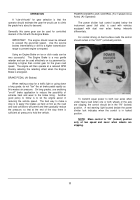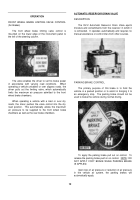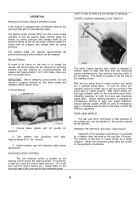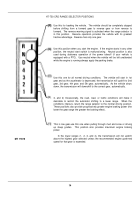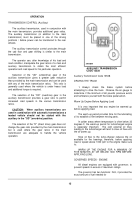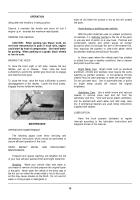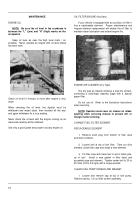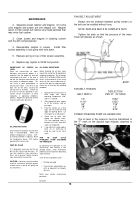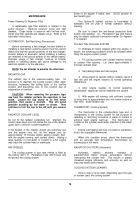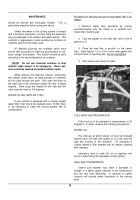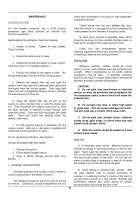TM-5-3805-254-14-P-1 - Page 27 of 590
MAINTENANCE
COOLING SYSTEM
For cold weather protection, use a 50-50 solution
permanent type which contains an effective rust
corrosion preventive.
Before adding the antifreeze, check the following:
1.
Inspect all hoses.
Tighten all hose clamps.
Check for leaks.
2.
Inspect the water pump for leaks.
3.
Inspect the fan belt and adjust to proper tension.
If the belt is worn or oil-soaked, replace it.
4.
Position the vehicle so the engine is level.
This
will permit all water to drain from the cooling system.
5.
Remove the radiator filler cap and open the
radiator drain; also open the crankcase water drains and
thoroughly drain the cooling system.
Then close both
drains and use a recognized cleaning solution, following
the manufacturer's instructions.
6.
Leave the radiator filler cap off and run the
engine for about one-half hour or until the engine gets
hot.
Then disconnect the radiator outlet hose to allow
the larger particles of sediment to pass through; also
open both drains.
Drain and flush thoroughly with clean
water.
Close both drains and securely fasten the
radiator outlet hose.
7.
Put the required amount of antifreeze into the
cooling system.
Add soft or rain water if available and
inspect the hose connections for leaks.
Do not use calcium chloride or salt solutions.
TRUCK STORAGE INSTRUCTIONS
1.
General Instructions.
2.
Fourth Month Storage Service.
3.
Once a Month Storage Service After Four
Months.
1.
GENERAL INSTRUCTIONS
Adequate protection and storage of new vehicles is
a strict responsibility of the dealer or branch.
The following procedures are to be used for storing
all vehicles.
Satisfactory storage arrangements are less
costly and troublesome in the long run than haphazard,
unplanned methods.
Claims arising from loss and damage that occur
while the vehicle is in storage will not be considered for
reimbursement by the Warranty Processing Center.
As rapid stock turnover is desirable, sales efforts
should be centered on those vehicles that have been on
hand and in storage for the longest period of time.
Check your own arrangements against the
following suggestions and correct situations which create
unnecessary expense and selling problems.
Parking Area
Whenever possible, vehicles should be stored
indoors in a dry, well ventilated area and protected from
sunlight.
When circumstances do not permit, definite
precautions must be taken \ to eliminate conditions
which would result in product deterioration, unwarranted
expense, and later customer dissatisfaction.
CAUTION:
A.
Do not park near transformers or electrical
motors, as when the protection wax contained in the
tire compound cracks, ozone in the air will attack the
exposed area.
B.
Do not park near trees, or where high weeds
or grass exist.
This will prevent damage from birds,
tree and week sap or insects which cause stain.
C.
Do not park near railroad tracks, industrial
smoke areas, paint shops, or where street and road
splash could contact vehicle.
D.
When the vehicle cannot be parked on a level
surface, block wheels.
Body-Cab
A.
If necessary wash vehicle.
Washing should be
followed by wiping of horizontal surfaces to remove any
water.
Never wash the vehicle in the direct rays of the
hot sun nor when the sheet metal is hot to the touch, as
this may cause streaks on the finish.
Do not use hot
water or strong soaps or detergents or wipe off dirt when
the surface is dry as this will scratch the paint.
B.
Avoid waxing or polishing new vehicles.
With
the paint material used on present production IH
vehicles, it is definitely harmful to the life of the paint to
use any kind of polish on a new vehicle.
Polishes and
combination cleaner and polish waxes all contain
abrasives which cut through the skin of the
21
Back to Top

